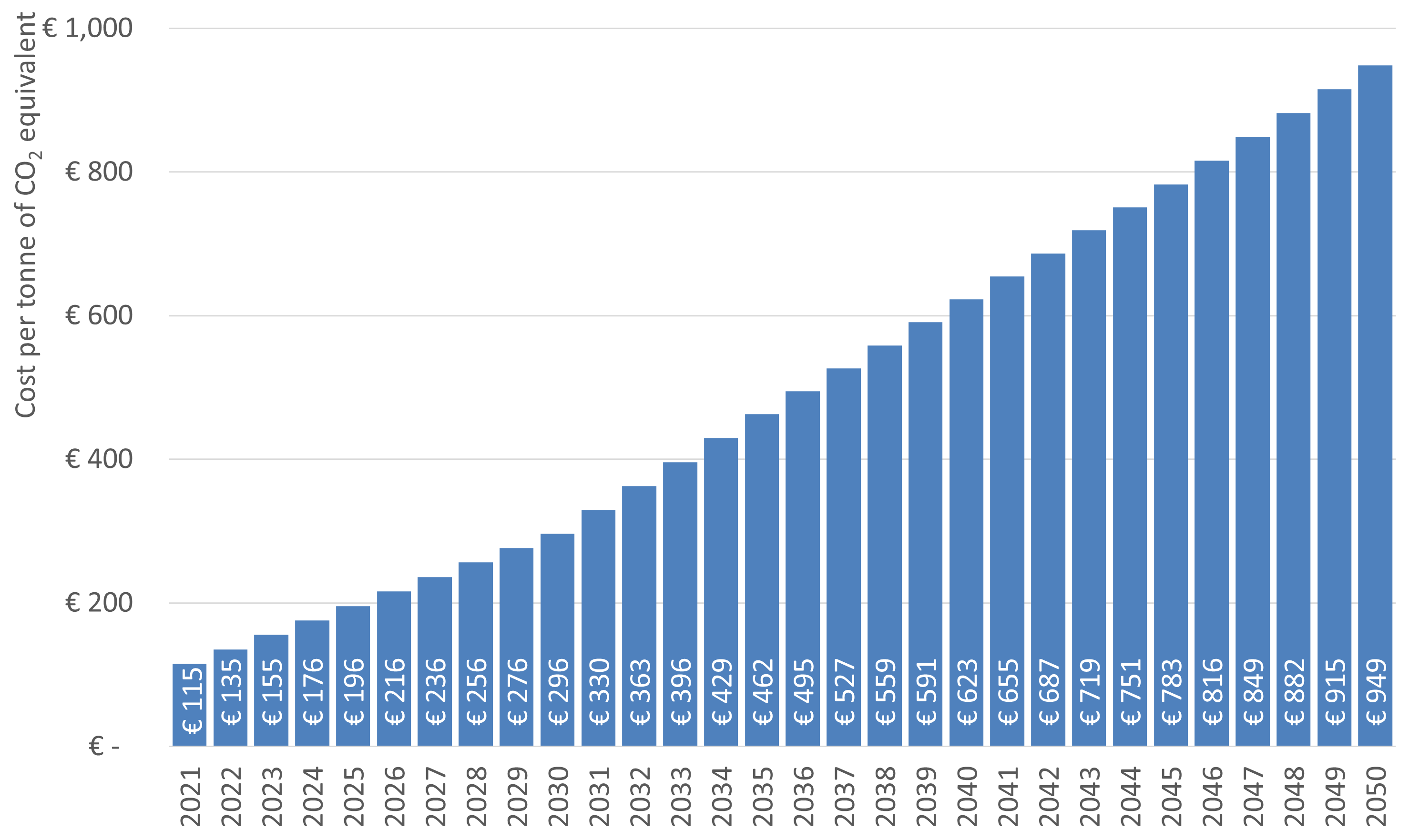10 Shadow cost of carbon
10.1 EUROCONTROL recommended values
The shadow cost of carbon is the cost of carbon required to drive the economy to meet the 1.5°C global temperature target set by the Intergovernmental Panel on Climate Change (IPCC). The values have been estimated based on the data provided by the European Investment Bank (EIB) in their 2021-2025 roadmap[1] and represent the cost in euros per tonne of CO2 equivalent.
The input is an adjustment of the EIB recommended values to reflect the most realistic cost of meeting the Paris Climate Agreement to limit global warming well below 2 degrees Celsius, ideally 1.5 – compared to pre-industrial levels[[2]. Please note that this input does not refer to the traditional market price but to the shadow cost of carbon (i.e. considering externalities and future policies). The original EIB proposed inputs are expressed in 2016 prices and have been adjusted to 2022 price levels using the values provided in Table 1.

10.2 Comment
In economic analyses the concept of ‘shadow cost’ is often used when working with an abstract commodity or intangible asset. Typically, two elements are reflected in the ‘shadow cost’:
- The cost of negative externalities such as pollution in this case
- The shadow cost involves the consideration of future policies
Shadow costs are inexact by definition, as they are based on assumptions, but their usefulness resides in that they help to understand the full socio-economic merits of a project. Please note that the shadow cost of carbon does not constitute in any way an optimal value for any policy instrument.
10.3 When to use the input?
This input is recommended for projects where the full socio-economic value of the initiative is studied, particularly involving the environmental assessment.